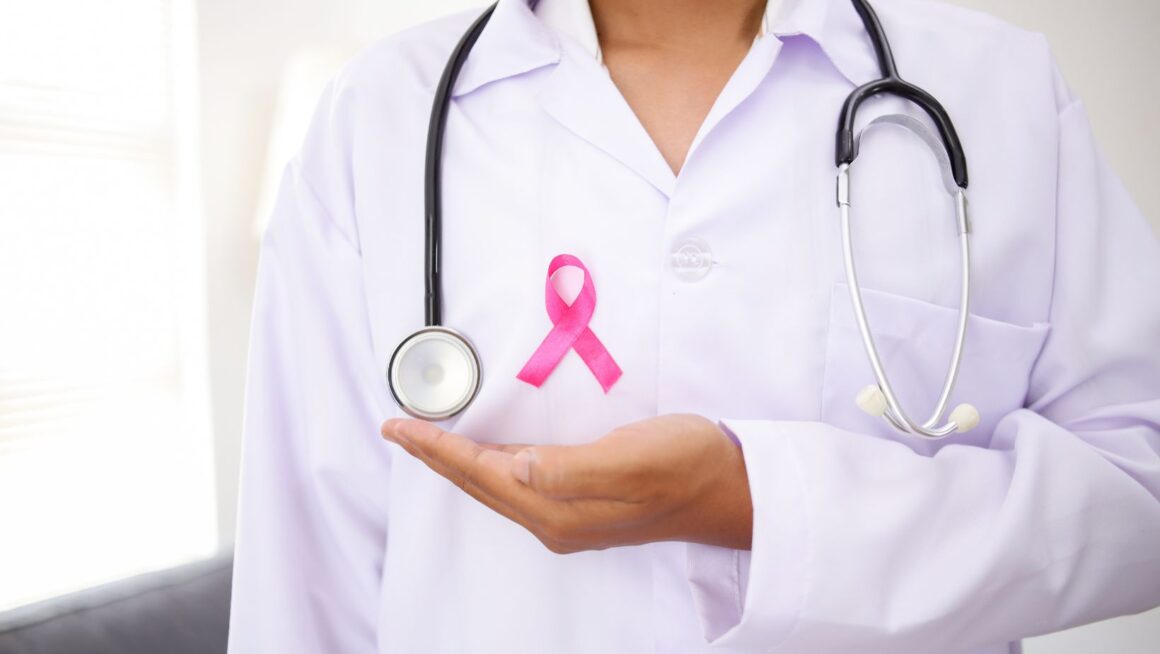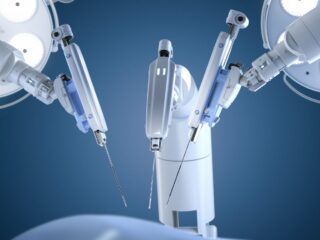
When most people think about breast cancer, they picture it as exclusively a women’s health issue. This widespread misconception creates a dangerous blind spot that affects thousands of men each year. While rare, breast cancer in men is a real and serious condition that demands greater awareness, earlier detection, and open conversation. Understanding the facts can quite literally save lives.
The Reality Behind the Statistics
Approximately 1 in 833 men will develop breast cancer during their lifetime, compared to 1 in 8 women. Though these numbers seem small, they translate to roughly 2,800 new diagnoses annually in the United States alone. The rarity of the condition contributes to delayed diagnoses—men often dismiss symptoms or remain unaware that they possess breast tissue capable of developing cancer.
Survival rates tell an important story. When detected early, the five-year survival rate exceeds 96%. However, because many men delay seeking medical attention, approximately 40% of cases aren’t diagnosed until the cancer has spread beyond the breast tissue. This late-stage detection significantly reduces survival odds and complicates treatment options.
The stigma surrounding breast cancer in men compounds the problem. Many men feel embarrassed discussing breast-related symptoms with healthcare providers or loved ones. Breaking this silence represents the first crucial step toward improving outcomes.
Recognizing the Warning Signs
Men have breast tissue, though considerably less than women, primarily located behind the nipple and areola. This tissue can undergo the same cancerous changes that occur in female breast tissue. Recognizing potential symptoms enables prompt medical consultation.
Physical Changes to Monitor
The most common initial symptom involves a painless lump or thickening in the breast area, typically found beneath the nipple. Unlike the diffuse breast tissue in women, male breast cancer often presents as a distinct, firm mass that’s relatively easy to detect through self-examination.
Nipple changes warrant immediate attention. These include nipple retraction (turning inward), discharge (particularly if bloody or clear), persistent redness, scaling of the nipple or areola, or puckering of the breast skin. Any unexplained changes in breast appearance should prompt a medical evaluation.
Skin alterations sometimes accompany breast cancer. Dimpling, thickening, or an orange-peel texture in the breast skin can indicate underlying issues. Additionally, swelling in the breast area or visible asymmetry between the two sides shouldn’t be ignored.
When to Seek Medical Attention
Don’t adopt a “wait and see” approach with breast changes. While most breast lumps in men prove benign (non-cancerous), only a healthcare provider can make that determination. Schedule an appointment if you notice any persistent changes lasting more than two weeks, particularly lumps, nipple discharge, or skin alterations.
For comprehensive information and support resources, Male Breast Cancer provides evidence-based guidance specifically addressing the unique challenges men face when navigating this diagnosis.
Understanding Risk Factors
Certain factors elevate a man’s likelihood of developing breast cancer, though having risk factors doesn’t guarantee disease development, and some men without obvious risk factors still receive diagnoses.
Genetic and Hereditary Factors
BRCA gene mutations represent the most significant genetic risk factor. Men who inherit mutations in BRCA1 or BRCA2 genes face substantially higher breast cancer risk—up to 6% lifetime risk for BRCA2 carriers compared to less than 0.2% for average-risk men. Family history of breast cancer, particularly in first-degree relatives, should prompt genetic counseling consideration.
Klinefelter syndrome, a chromosomal condition where men have an extra X chromosome, increases risk approximately 20-fold. This condition affects hormone levels and breast tissue development, creating conditions more favorable to cancer growth.
Hormonal and Environmental Factors
Estrogen exposure influences breast cancer development. Conditions that increase estrogen levels or decrease testosterone—including liver disease, obesity, and certain medications—may elevate risk. Men who’ve received estrogen therapy for gender transition or prostate cancer treatment face higher risk.
Radiation exposure to the chest area, whether from previous cancer treatment or occupational exposure, increases susceptibility. Age remains a consistent factor, with most diagnoses occurring in men between 60 and 70 years old, though the disease can affect younger men.
Diagnosis and Medical Evaluation
When suspicious symptoms prompt a medical visit, healthcare providers employ several diagnostic tools. The process typically begins with a clinical breast examination where the doctor manually assesses the breast tissue, checking for lumps, skin changes, and lymph node enlargement.
Diagnostic Procedures
Imaging studies provide detailed visualization of breast tissue. Mammography, though less commonly performed on men, can identify suspicious masses. Ultrasound helps distinguish between fluid-filled cysts and solid masses. For more detailed evaluation, MRI scans may be recommended, particularly for high-risk individuals or when other imaging proves inconclusive.
Biopsy procedures offer definitive diagnosis. During a biopsy, a small tissue sample is removed and examined under a microscope. Core needle biopsy represents the most common approach, providing sufficient tissue for accurate diagnosis and hormone receptor testing. These receptor tests determine whether cancer cells respond to hormones, which guides treatment decisions.
Treatment Approaches and Options
Male breast cancer treatment closely mirrors approaches used for women, though some adjustments account for anatomical and hormonal differences. Treatment plans depend on cancer stage, hormone receptor status, overall health, and patient preferences.
Surgical Interventions
Mastectomy (breast removal) serves as the most common surgical approach for men. Because men have less breast tissue than women, lumpectomy (removing only the tumor and surrounding tissue) is less frequently performed. The surgery typically includes sentinel lymph node biopsy to determine whether cancer has spread to nearby lymph nodes.
Many men wonder about reconstruction options. While breast reconstruction is standard practice for women, fewer men pursue this option, though it remains available for those who desire it.
Additional Treatment Modalities
Radiation therapy may follow surgery, particularly if cancer has spread to lymph nodes or if surgical margins contained cancer cells. Radiation uses high-energy beams to destroy remaining cancer cells and reduce recurrence risk.
Hormone therapy benefits men whose cancer tests positive for hormone receptors. Tamoxifen, the most commonly prescribed medication, blocks estrogen’s effects on cancer cells. Some men experience side effects including hot flashes, sexual dysfunction, and mood changes.
Chemotherapy may be recommended for larger tumors, lymph node involvement, or aggressive cancer subtypes. These powerful drugs circulate throughout the body, targeting rapidly dividing cancer cells.
Living Beyond Diagnosis
A breast cancer diagnosis profoundly impacts physical health, emotional well-being, and personal identity. Men often struggle with feelings of isolation, as most breast cancer resources and support groups cater to women. Finding communities and resources specifically addressing male breast cancer experiences proves invaluable.
Emotional and Psychological Support
The emotional toll of cancer extends beyond physical symptoms. Many men report feeling emasculated by a “women’s disease” diagnosis, struggling with body image changes post-surgery, or experiencing relationship challenges. Professional counseling and peer support groups provide essential outlets for processing these complex emotions.
Communication with loved ones presents challenges for many men, who may feel uncomfortable discussing breast-related health issues. Open dialogue with partners, family members, and close friends creates support networks crucial for navigating treatment and recovery.
Lifestyle Considerations
Maintaining overall health supports recovery and reduces recurrence risk. Regular physical activity, balanced nutrition, limited alcohol consumption, and maintaining healthy weight all contribute to better outcomes. Your healthcare team can provide personalized recommendations based on your specific situation and treatment plan.
FAQ Section
Can men really get breast cancer, or is it extremely rare?
Yes, men absolutely can develop breast cancer, though it’s uncommon. About 2,800 American men receive diagnoses annually. The rarity creates awareness gaps that often lead to delayed detection. Every man has breast tissue, making them susceptible to the same cellular changes that cause cancer in women.
What does a breast cancer lump feel like in men?
Male breast cancer lumps typically present as firm, painless masses beneath or near the nipple. The lump feels distinctly different from surrounding tissue—hard rather than soft, and doesn’t move easily when pressed. Because men have less breast tissue overall, lumps are often easier to detect than in women. Any persistent lump warrants medical evaluation, even if painless.
Is male breast cancer hereditary?
Genetics play a significant role in many cases. Approximately 20% of men with breast cancer have family members with the disease. BRCA gene mutations, particularly BRCA2, substantially increase risk. Men with breast cancer diagnoses should consider genetic counseling to assess hereditary factors and inform family members who might benefit from increased surveillance.
How is treatment different for men versus women?
Treatment approaches are largely similar, though some differences exist. Men typically undergo mastectomy rather than lumpectomy due to smaller breast tissue volume. Hormone therapy options differ slightly—while tamoxifen works well for men, aromatase inhibitors (commonly used in women) may be less effective without additional medication. Overall, treatment protocols follow similar principles focused on cancer stage and receptor status.
What’s the survival rate for male breast cancer?
Survival rates depend heavily on detection stage. The five-year survival rate for localized breast cancer (confined to the breast) exceeds 96%. Regional spread (to nearby lymph nodes) drops this to approximately 83%, while distant metastasis (spread to other organs) results in about 22% five-year survival. These statistics underscore the critical importance of early detection and prompt treatment.
Conclusion
Male breast cancer may be rare, but it’s far from insignificant for the thousands of men affected annually. Awareness represents the most powerful tool we have for improving outcomes. By recognizing that men have breast tissue capable of developing cancer, understanding warning signs, and eliminating the stigma surrounding this diagnosis, we create conditions for earlier detection and better survival rates.

Every man should familiarize himself with normal breast tissue appearance and texture, enabling prompt recognition of changes. Regular self-examinations take mere minutes but can detect problems early when treatment proves most effective. Men with elevated risk factors—family history, genetic mutations, or hormone-related conditions—should discuss enhanced screening with healthcare providers.
Breaking the silence around male breast cancer saves lives. Whether you’re concerned about personal risk, supporting a loved one through diagnosis, or simply seeking to expand your health knowledge, understanding this condition empowers better decision-making. Don’t let embarrassment or misconception prevent you from seeking medical attention for concerning symptoms. Your health matters, and breast cancer doesn’t discriminate by gender.












